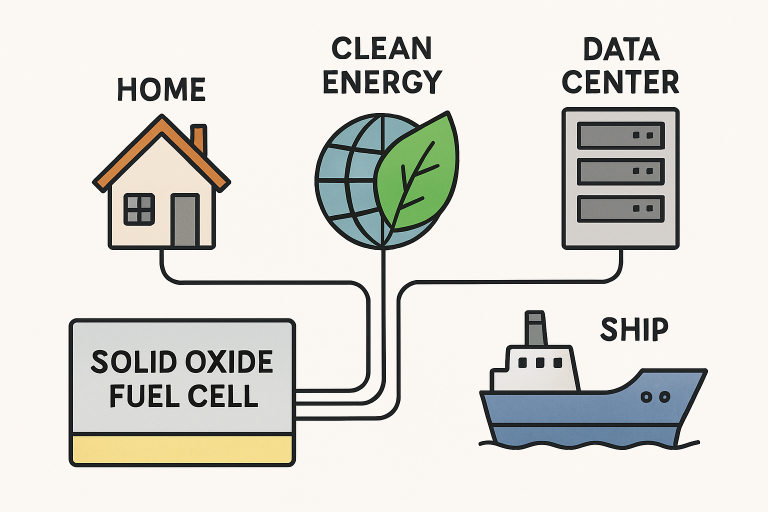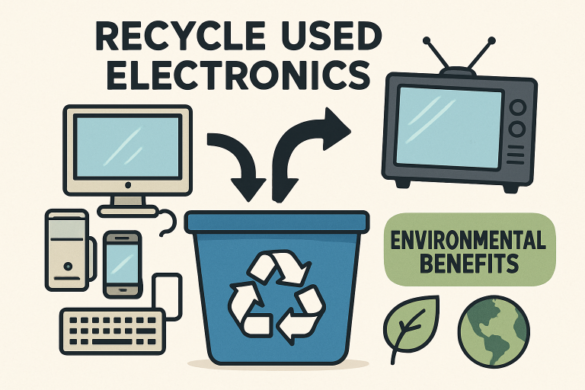Solid Oxide Fuel Cells (SOFCs) are transforming the global push toward sustainable energy with their unique ability to deliver high efficiency, fuel flexibility, and near-zero emissions. As industries and communities increasingly shift away from fossil fuels, SOFCs have emerged as a cornerstone technology. Notably, leading innovators like Bloom Energy solid oxide fuel cell exemplify how this technology can underpin both large-scale utility adoption and localized clean power generation. Whether deployed in a residential setting or a high-demand industrial environment, SOFCs offer innovative pathways to reliable, cleaner, and smarter energy systems.
Unparalleled fuel flexibility enables SOFCs to efficiently utilize hydrogen, natural gas, or even biogas, making them instantly adaptable as the world transitions to renewable and low-carbon options. Their rapid advancement, coupled with falling costs, has expanded their role across diverse applications—such as home CHP units, digital infrastructure, shipping, and more—solidifying SOFCs as essential to a net-zero future.
Residential Applications
Increasingly adopted in homes across Europe and Asia, SOFC-based combined heat and power (CHP) systems offer a dual benefit: electricity generation and heating from a single, efficient unit. By converting chemical energy directly into electricity and recovering waste heat, these systems slash household energy bills and emissions. Their ability to work in tandem with solar panels further amplifies efficiency. Recent demonstrations in Italy, as highlighted by PV Magazine, have proven that SOFCs coupled with photovoltaic (PV) panels not only effectively power homes but also supply excess clean energy to the grid, setting a benchmark for sustainable, smart homes.
Commercial and Industrial Uses
SOFCs provide stable, scalable power for critical applications such as data centers, hospitals, and large-scale manufacturing facilities. Given today’s data-driven world, a reliable, resilient power source is paramount—here, SOFCs’ ability to provide uninterrupted energy without emission spikes stands out. Major players, such as Bloom Energy, supply SOFC solutions that power AI infrastructure and data-intensive operations, helping organizations reduce both operational costs and carbon emissions. The flexibility to use different clean fuels ensures long-term viability, regardless of how local gas supplies or hydrogen pricing evolve.
Transportation Sector
The marine and transportation industries are aggressively seeking SOFCs for zero-emission propulsion and auxiliary power solutions. Unlike traditional engines, SOFCs can utilize hydrogen- or ammonia-derived fuels to efficiently generate power with minimal emissions of pollutants. Recent research, such as findings reported by Tech Xplore, has highlighted
stacks for ships, where their modularity and quick start-up make them ideally suited for a range of applications, from cargo vessels to ferries. This technology anticipates the introduction of stringent new international emissions standards and embodies the global push for greener maritime operations.
Advancements in SOFC Technology
SOFC performance and cost-effectiveness have surged thanks to innovative breakthroughs in materials science and engineering. One standout achievement is the rapid application of nanoscale praseodymium oxide catalysts, which can triple fuel cell efficiency within minutes of coating. These catalysts significantly enhance the critical oxygen reduction reaction at the electrode, resulting in longer life cycles and increased energy output. Alongside progress in catalyst technology, developers have engineered robust cell structures that enable reversible operation, enabling the same device to switch between generating power and producing hydrogen.

Environmental Impact
SOFCs represent a significant leap forward for clean energy, outpacing conventional methods in terms of carbon intensity and air quality. Because SOFCs convert fuel’s chemical energy directly into electricity, they operate with minimal waste heat and almost no nitrogen oxides, sulfur dioxide, or particulate emissions. Their compatibility with hydrogen and sustainable biogas further enhances green credentials, making them central to achieving government-mandated decarbonization targets. The U.S. Department of Energy has recently prioritized investments into SOFC research, aiming to deploy them widely for low-emission hydrogen generation across industry sectors.
Challenges and Future Outlook
SOFCs still face hurdles, primarily centered on their high operating temperatures—often 600°C or higher—and the need for durable, cost-effective materials that can withstand years of thermal cycling. However, solutions are in active development, with breakthroughs in ceramic composites, stack design, and hybrid system integration continually pushing performance higher while driving costs down. An especially promising area is the emergence of reversible SOFC systems, or RSOFCs, which can alternate between fuel cell and electrolyzer functions. This dual capability offers vast potential for grid balancing and seasonal storage, heralding a more adaptable and robust clean energy infrastructure. As research continues and economies of scale are achieved, SOFCs are poised to become ubiquitous in our homes, industries, and transportation systems, shaping a resilient and low-carbon energy landscape for generations to come.


